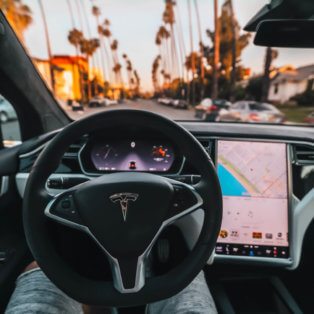



Recently I have been wondering how comfortable I really am with the idea of self driving vehicles. I believe that it is the future, and I believe that in the end it will be significantly safer. What concerns me is the interim period, where we have cars that are not capable of truly driving themselves and drivers who believe that they no longer need to pay attention and control their own vehicles.
This got me looking at the various levels of vehicle autonomy and I found this article on Tech Republic particularly good (apart from annoying adverts). While reading this, it struck me that these levels could very effectively be translated into levels of business autonomy.
One of the biggest challenges for any business founder is managing the fact they as the business grows, they do not personally get any bigger. They don’t gain any extra hours in the day or grow any extra eyes or hands. Businesses are scalable, but humans are not. It is therefore essential that businesses become more autonomous as they grow, freeing them from dependence on any one finite individual.
With this in mind, I have translated the autonomous driving levels into autonomous business levels.
Level 0: This one is basically every small business or tiny startup. The founder (human) controls it all: marketing, sales, admin, finance, legal, design, production, customer service. It’s why many small business owners end up being good all rounders, even if they don’t start out that way.
Level 1: This business-assistance level means that most functions are still controlled by the founder, but a specific function (like admin or production) can be done by another person or organisation day to day, but these activities still need to be managed by the founder.
Level 2: In level 2, at least one core area of the business such as sales or production is automated. It means that the founder is disengaged physically and mentally from operating this key part of the business by having his or her hands off the execution AND management of the tasks. The founder must still always be ready to take control of these business activities, however.
Level 3: Founders are still necessary in level 3 autonomous businesses, but are able to completely shift “mission-critical functions” to the business, under certain market, client and staff circumstances. It means that the founder is still present and will intervene if necessary, but is not required to monitor the situation in the same way it does for the previous levels. Just as with autonomous vehicles this is “the biggest demarcation is between Levels 3 and 4.” The founder must keep one eye on the situation at all times (even on holiday), and provide input to the long term direction even if they are not involved in day to day activities.
Level 4: This is what is meant by “fully autonomous.” Level 4 autonomous businesses are designed to perform all business-critical functions and monitor market, customer and staff conditions both short and long term. However, it’s important to note that this is limited to the operational design domain (ODD) of the business—meaning it does not cover every business scenario, only those that it has been designed to operate in. If other circumstances were encountered, the founder would need to step in and manually navigate the business through it until regular circumstances resumed.
Level 5: This refers to a fully-autonomous system that expects the business’s performance to equal that of a human, in every business scenario—including extreme environments like recessions or market disruption.
This is really just a thought exercise, a highly simplistic one, and nothing more than that. I think many entrepreneurs and business owners have a dream of achieving Level 5 autonomy and in most cases it is only a mirage on the horizon, just like level 5 vehicle autonomy. In our business, we spent many years at levels 0 and 1, but I think it is fair to say that we are somewhere on the cusp between Levels 2 and 3 now.
Although some level of autonomy might be essential to prevent the founders or owners of a business from becoming bottlenecks that throttle the development of the organisation, we should question whether more autonomy is always a good thing.
Just as with driverless vehicles, there is a risk that the founders of a semi-autonomous business might treat it as fully autonomous and take their eye off the road, leading to potential problems in the future that won’t be foreseen. Similarly, it is a potential risk that as a business becomes more autonomous, it might lose its agility to respond to changes in market conditions, becoming rigid in only being able to follow the systems that have been programmed into it. This is the classic curse of large organisations that become paralysed by their own bureaucracy.
Then there is the issue of ethics. In an ideal world (yes, I am dreaming), all businesses would be driven by a strong mission to make a positive impact in the world, a mission that usually comes from the founder. As the founder becomes less involved in the day to day activities of the business, there is an inherent risk that the ethical foundation of the business gets diluted and either forgotten, or used simply as a marketing gimmick rather than a core operating principle. It is therefore essential that as the business progresses through the various levels of autonomy, the ethical principles are ingrained deeply in the culture and processes of the organisation, being central to everything that it does.
In the end, it is about carefully managing any steps towards automation to ensure that the pros always outweigh the cons. For us it has been a challenge to find the perfect balance, but we continue to learn and make constant adjustments in search of perfection.
No comments yet.
Be the first one.